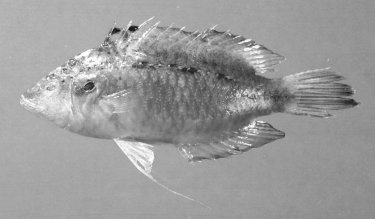
|
Relevant synonyms
Misidentification
Meristic formula
|
|
| photo : David Darom |
|
SHORT
DESCRIPTION
color :
body brown-red to greenish yellow with elongated dark brown-red spots along lateral line. Black spot on the upper part of the first 2-4 interspinous dorsal membrane. Conspicuous black blotch on the operculum with yellow ring near its edge.
size :
common 5-8 cm (max. 11 cm). |
DISTINGUISHING CHARACTERISTICS
BIOLOGY / ECOLOGY
habitat :
coastal waters, usually with seagrass to depth of 35 m. |
|
1st
MEDITERRANEAN RECORD
|

|
|
DISTRIBUTION
|
ESTABLISHMENT SUCCESS
speculated reasons for success :
|
|
|
MODE OF
INTRODUCTION |
IMPORTANCE TO
HUMANS |
|
KEY
REFERENCES
|